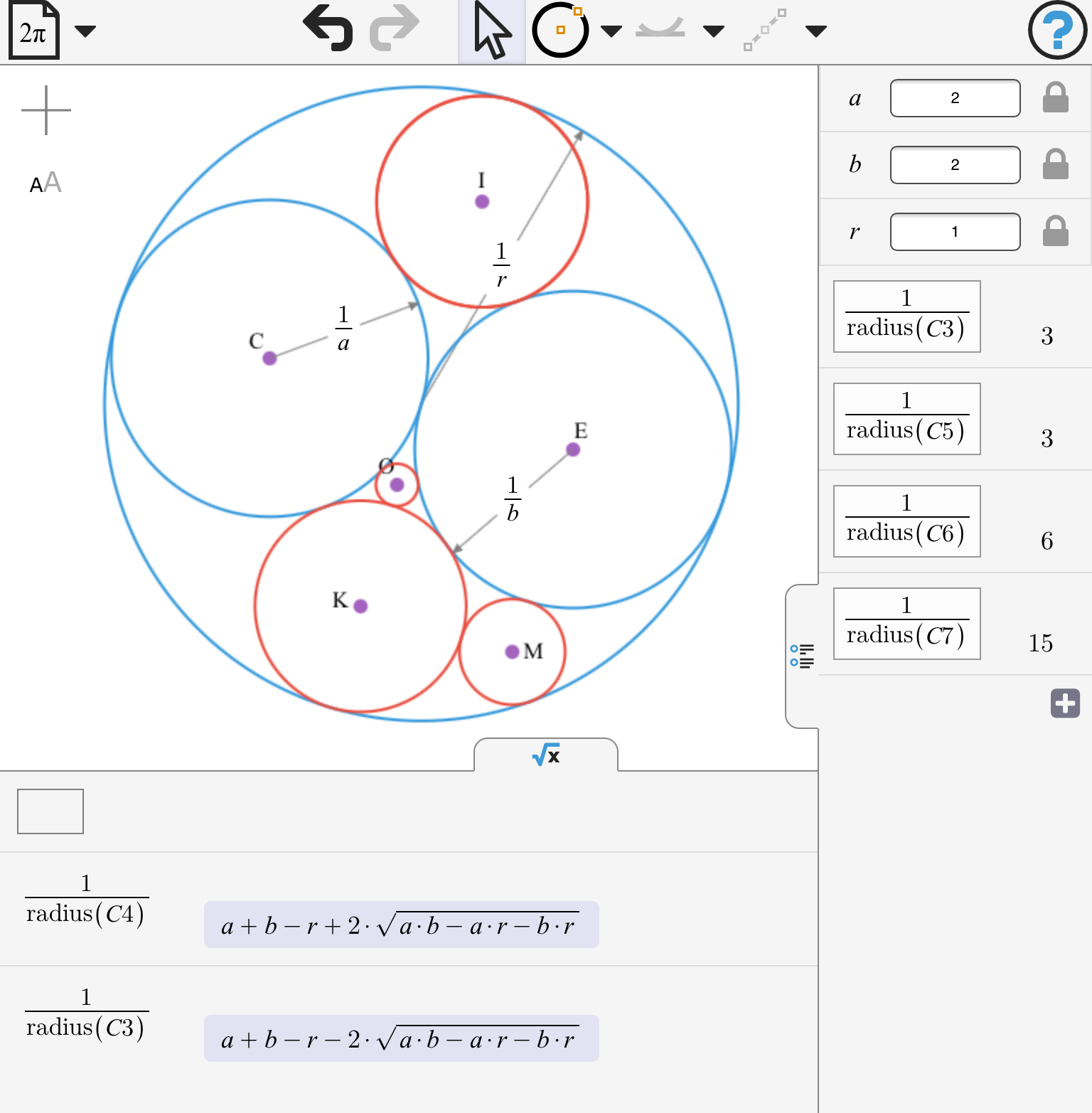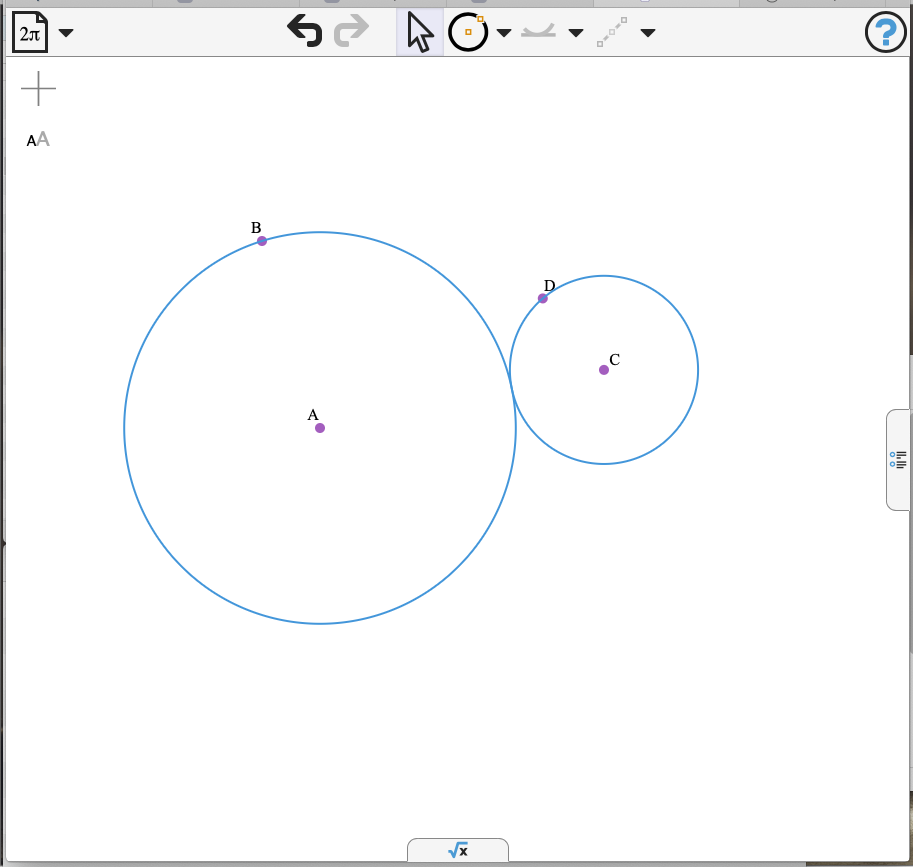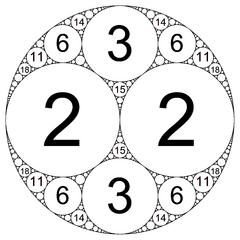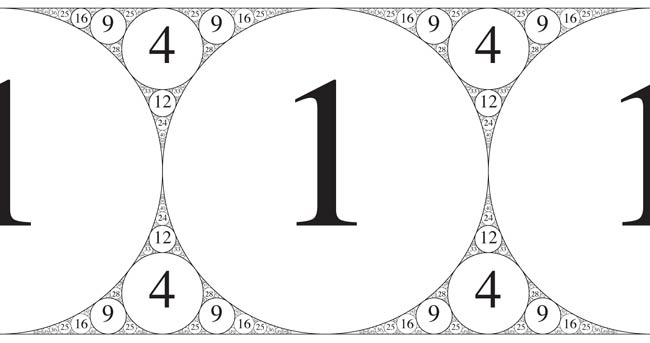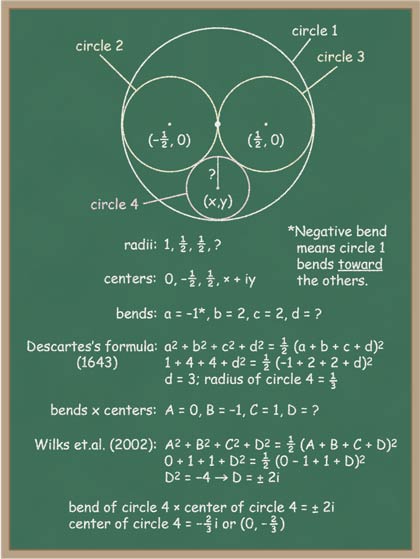The Kiss Precise
For pairs of lips to kiss maybe
Four circles to the kissing come
Though their intrigue left Euclid dumb, Use this model to explore some of the many integral gaskets and their curvatures... |
|
Imagine two circles - kissing!
Now add a third circle to kiss both of these - it can only be placed in one of THREE positions, but could have many different sizes.
Once the third kissing circle is added, however, everything changes! Any further kissing circles are fully determined - they may only lie in certain positions and their sizes (radii OR their reciprocals, curvatures or bends) are fixed.
In fact, given any THREE kissing circles, there are only TWO possible subsequent circles - a feature which Descartes recognised as quadratic!
Before proceeding, you might like to take a moment and try the GXWeb Kissing Circles Challenge
⇑ Tap for more...Did you know...
If the first four curvature values of an Apollonian Gasket are INTEGERS, then all subsequent circles will have whole number values?!
For any integer n > 0, there exists an Apollonian gasket defined by the following curvatures: \[[-n, n + 1, n(n + 1), n(n + 1) + 1]\] For example, the gaskets defined by (-2, 3, 6, 7), (-3, 4, 12, 13), (-8, 9, 72, 73), and (-9, 10, 90, 91) all follow this pattern.
